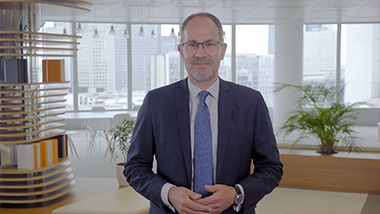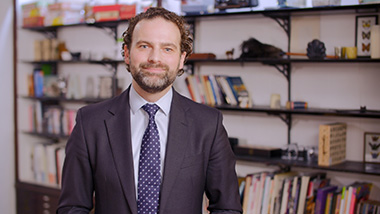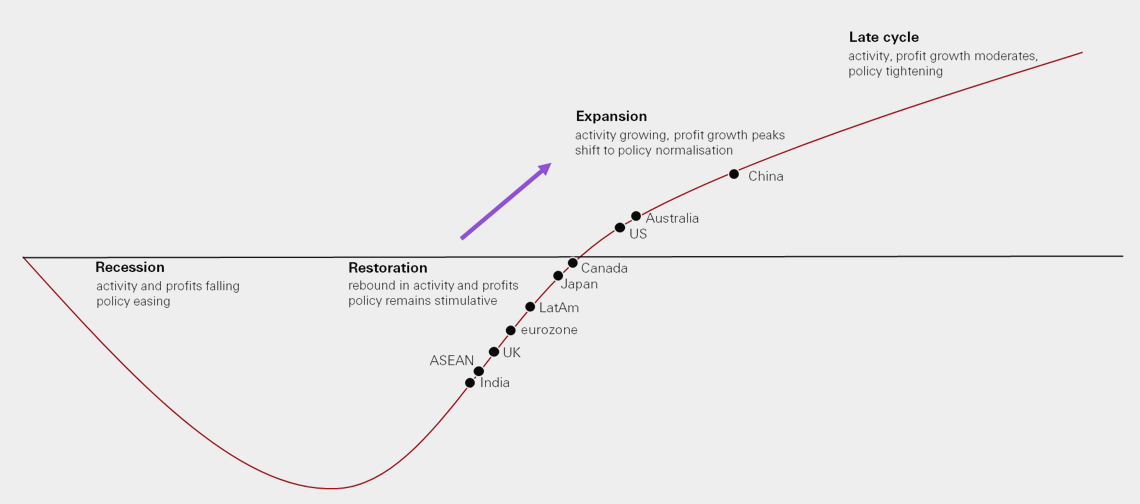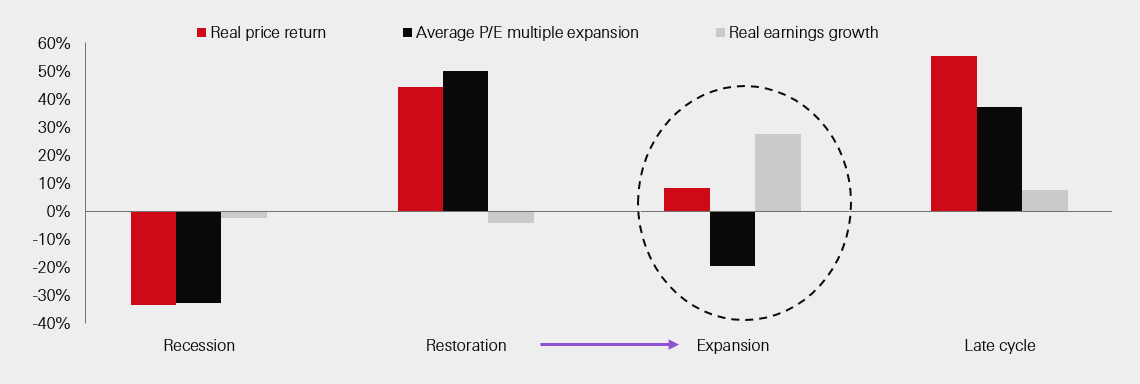Mid Year Investment Outlook
What building back better means for economies and markets.
The core message for investors is to ‘be prepared’. Be prepared for the coming cyclical transition, a lower phase of investment returns, and a policy regime shift which heralds mission economy risks and requires a strategic repositioning away from global bonds.
Videos
-

Xavier Baraton
Global Chief Investment Officer -

Joanna Munro
CEO Alternatives -

Joe Little
Global Chief Strategist
So far this year, the global economy has been in a ‘restoration phase’
The story of the first half of 2021 boils down to a continued and impressively-fast recovery for the economy and corporate profits – especially in the US – driven by the vaccine rollout, policy support, and rising confidence.
Fixed income returns were negative just about everywhere in the first half, as the re-pricing of inflation risk required higher bond yields and rapid yield curve steepening. China has been the stand-out positive bond market this year, supported by good carry, a strong yuan, and low correlation versus other assets.
Global stock market performance has been impressive, but uneven, as investors rotated towards value and cyclical names.
Real economy asset classes also fared well, especially industrial commodities (the top performing asset class so far this year) and Private Equity.
Transitioning to the 'expansion phase'
As we head into the second half of the year, the key macro observation is that the point-in-cycle is changing.
Output has fully-recovered the pandemic dip in the US, China, and across industrial Asia. Corporate profits have rebounded sharply, and earnings expectations for 2022 are ahead of pre-Covid forecasts. Meanwhile, with inflation pressures building, the policy debate has also moved on to the timetable for tapering quantitative easing and the timing of policy lift-off.
The business cycle is moving quickly, but the evidence suggests that we are now entering a mid-cycle, expansion phase. Within that trend, there are some important regional divergences.

Principal investor challenge is related to how far collective beliefs have already travelled
The expansion phase will bring a strong and growing economy, improving labour markets, and robust profits. However, the historic pattern is for lower total equity returns in mid-cycle relative to what investors earn during earlier, recovery phases. We should be realistic. After a period when rising investor optimism has lowered perceptions of risk and re-rated risky asset classes, the outlook is now for the reverse. Increasingly, valuations are set to become a drag on returns.

Economic expansion implies rising bond yields. And with ultra-low credit spreads and the equity premium compressed, many risk asset classes will struggle to digest US bond yields above two per cent.
Treasuries have a clear yield advantage over other global bond markets, which provides an important check on how fast yields can expand. Nonetheless, over-heating worries will be a recurring theme in markets and will support a positive inflation premium.
The backdrop of rising bond yields means that value equities continue to make sense, relative to growth. The down-side cyclical risk is the dollar, which is particularly important for our strategy favouring international equities and emerging market fixed income.
Fiscal activism is pushing us toward the ‘mission economy’
The policy mix has changed materially versus the 2010s – and that has profound implications for how we build strategic asset allocations.
No longer seen as the bureaucratic blob, the state can direct, coax, and crowd-in private investment and boost productivity. The old risks of the 2010s are replaced with a new set of challenges: higher taxes, inflation, and a more empowered labour market. We already see a significant degree of ‘mission-ness’ in the US and Chinese policy agendas.
How investors build portfolio resilience for a mission economy will be a critical decision. The most fundamental rethink needs to be about the role that government bonds play in our portfolios. As the balance of economic risks shifts, bonds are destined to lose their property of being cheap hedges.
The solution for investors is not straight-forward, and there is no silver bullet. But one idea is to find new portfolio diversifiers among a broader universe of alternative asset classes.
We should look to get as close to real, inflation-protected cash-flows as possible. Infrastructure debt is a strong candidate. As are allocations to commodities such as copper (the oil of the mission economy), other key minerals, or to carbon offsets.
A more conventional allocation would be to look to Asian bonds as a substitute for global bonds. Renminbi onshore bonds embed higher yields and lower correlations to equity markets. Or Asia high-yield credits, which benefit from higher spreads and lower default rates.
Read the full 2021 Mid Year Investment Outlook
Investment expertise
Error message: There is an error with the RichTextEditor component. Please check the log for more information
The value of investments and any income from them can go down as well as up and investors may not get back the amount originally invested. Past performance is not a reliable indicator of future performance. Any views and opinions expressed are subject to change without notice. Any forecast, projection or target where provided is indicative only and is not guaranteed in any way. We accept no liability for any failure to meet such forecast, projection or target.





